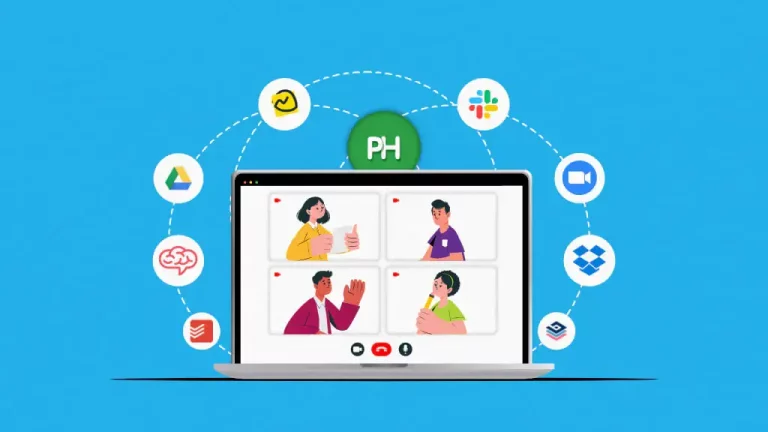Mastering Salesforce: The Ultimate User’s Manual
In the ever-evolving landscape of customer relationship management (CRM), Salesforce remains a dominant force, empowering businesses across the globe to enhance their operational efficiency and customer relations. This Salesforce Usage Guide for 2024 is tailored to help new and seasoned users navigate the extensive features of Salesforce, ensuring they leverage the platform to its fullest potential. From setting up your account to exploring advanced functionalities, this guide is your go-to resource for all things Salesforce.
Table of Contents
Getting Started with Salesforce
Understanding the Basics
Getting Started with Salesforce
Understanding the Basics
Before diving into the complexities of Salesforce, it’s crucial to grasp the basics:
What is Salesforce? Salesforce is a cloud-based CRM software that facilitates enhanced customer relationship management by integrating marketing, sales, commerce, service, and IT teams into one platform. As a comprehensive suite, Salesforce provides various tools and features to streamline business operations, improve customer interactions, and drive sales growth. The platform operates on a multitenant architecture, meaning multiple customers share standard technology and run on the latest release. This ensures that Salesforce is scalable, secure, and constantly updated with new features without disrupting the user experience.
At its core, Salesforce enables businesses to manage databases, track leads, conduct and monitor marketing campaigns and provide post-sale services. Whether you are a small business looking to manage customer relationships more effectively or a large enterprise needing robust sales and customer insights, Salesforce offers customizable solutions to meet your needs. Moreover, its cloud-based nature allows easy access from anywhere and on any device, facilitating remote work and on-the-go management.
Salesforce’s capabilities are further enhanced by its extensive ecosystem of applications, available through its AppExchange marketplace, where users can find over 4,000 applications to extend functionality in countless ways. The possibilities are vast, from automation and analytics to data cleaning and team collaboration.
Understanding these foundational aspects of Salesforce is the first step towards mastering its extensive CRM capabilities and customizing its powerful tools to fit your organization’s unique needs.
Setting Up Your Salesforce Account
- Sign Up: Register for an account on the Salesforce website.
- Customize Your Dashboard: Tailor the dashboard to suit your needs by adding frequently used tools and reports.
- Import Data: Seamlessly import your existing customer data into Salesforce.
Exploring Core Features

Sales Cloud
Lead Management
Lead management within Salesforce’s Sales Cloud empowers organizations to efficiently track and nurture leads from the initial contact to conversion. This is essential for maintaining a healthy sales pipeline and driving revenue growth. Sales Cloud provides robust tools designed to streamline capturing, tracking, and converting leads into customers.
- Automated Scoring and Routing: Salesforce enhances lead management by automating lead scoring based on predefined criteria that signify a prospect’s likelihood to buy. This automation also extends to lead routing, where leads are automatically directed to the appropriate sales personnel based on their scores, territories, or specific areas of expertise. This ensures that high-value prospects are quickly engaged by the most suitable team member, increasing the chances of a successful conversion.
- Customizable Lead Management Processes: With Salesforce, businesses can customize their lead management processes to align with their unique sales cycles and customer engagement strategies. This includes setting up custom fields to capture specific information about each lead, defining unique lead statuses that reflect different stages in the lead lifecycle, and using visual workflow tools to map out and automate critical activities involved in lead nurturing.
- Real-Time Analytics and Reporting: Sales Cloud provides comprehensive analytics and real-time reporting capabilities that offer deep insights into lead generation and conversion rates. Sales teams can monitor the effectiveness of different lead sources, track progress against sales quotas, and identify trends that may affect sales outcomes. These insights enable sales managers to make informed decisions and adjust strategies promptly to optimize sales performance.
- Integration with Marketing Campaigns: Lead management seamlessly integrates with Salesforce’s Marketing Cloud, allowing for a coordinated approach between marketing and sales efforts. This integration ensures that leads generated from marketing campaigns are captured directly into the Sales Cloud, where they can be nurtured and tracked throughout the sales funnel. Marketing teams can also use feedback from the sales process to refine their campaigns and targeting strategies, creating a continuous loop of improvement and personalization.
- Mobile Accessibility: Salesforce’s mobile functionality ensures sales teams can access and manage their leads. With the Salesforce mobile app, sales representatives can update lead information, follow up on tasks, and respond to client inquiries from anywhere, ensuring that no opportunities are missed due to communication delays or lack of access to data.
Through these sophisticated functionalities, Salesforce’s Sales Cloud equips businesses with all the necessary tools to manage leads more effectively, enhancing both the efficiency of sales processes and the effectiveness of customer interactions.
Opportunity Management
- Monitor sales deals and related stages.
- Forecast revenue with built-in analytics tools.
Service Cloud
Case Management
- Resolve customer issues efficiently with a centralized support platform.
- Implement omnichannel routing for optimal resource allocation.
Field Service
- Schedule, dispatch, and track field service operations.
- Use mobile functionalities to update jobs in real time.
Marketing Cloud

Campaign Management
- Designed and managed marketing campaigns across multiple channels.
- Analyze campaign performance and adjust strategies accordingly.
Email Studio
- Create personalized email marketing campaigns at scale.
- Utilize segmentation and analytics to improve engagement.
Advanced Usage Tips
Automating Processes with Salesforce
- Workflow Automation: Streamline daily tasks by setting up rules that trigger actions based on specific conditions.
- Approval Processes: Ensure data integrity and compliance by automating the approval of critical records.
Integrating Third-Party Applications
- Connect Salesforce with external apps like Google Workspace, Slack, and more for enhanced functionality.
- Use the Salesforce AppExchange to find compatible add-ons.
Leveraging AI with Einstein
- Implement Salesforce Einstein for advanced analytics and predictive insights.
- Enhance customer service with AI-driven recommendations and chatbots.
Salesforce for Different Industries
- Healthcare: Manage patient interactions and improve care coordination with Health Cloud.
- Financial Services: Streamline client management and compliance with Financial Services Cloud.
- Manufacturing: Connect sales and operations for better forecasting with Manufacturing Cloud.
(FAQs) How can businesses maximize their use of Salesforce?
Q: How can businesses maximize their use of Salesforce?
A:
- What are the critical steps for successful Salesforce implementation?
- Proper planning and goal-setting
- Customization to match business processes
- Thorough training for users
- Ongoing support and optimization
- How can Salesforce be tailored to suit specific business needs?
- Customization of fields, objects, and workflows
- Integration with other business systems
- Development of custom applications or functionalities
- What strategies can improve user adoption of Salesforce within a company?
- Clear communication of benefits and expectations
- Engaging training programs
- Providing ongoing support and feedback channels
- Recognizing and rewarding successful usage
- What are the benefits of utilizing Salesforce analytics and reporting features?
- Insights into sales performance, customer behaviour, and trends
- Data-driven decision-making
- Monitoring of critical metrics and goal-tracking
- How can businesses ensure their Salesforce instance remains up-to-date and optimized?
- Regularly reviewing and updating processes
- Staying informed about new Salesforce releases and features
- Engaging with Salesforce community resources and best practices
- Conducting periodic health checks and performance assessments
Conclusion
Embracing Salesforce within your organization offers a transformative potential to enhance customer relations and streamline internal processes. As we’ve explored in this Salesforce Usage Guide, the platform’s versatility across different clouds caters to various industries and needs. By effectively implementing the tips and strategies outlined in this guide, businesses can ensure that they keep pace with the digital transformation and stay ahead of the competition in 2024 and beyond.
Leverage this guide to unlock Salesforce’s comprehensive capabilities and drive your business to new heights of efficiency and customer satisfaction. Whether a small business or a large enterprise, Salesforce has the tools to revolutionize how you interact with your customers and manage your operations. Start your Salesforce journey today and see the difference it can make!






